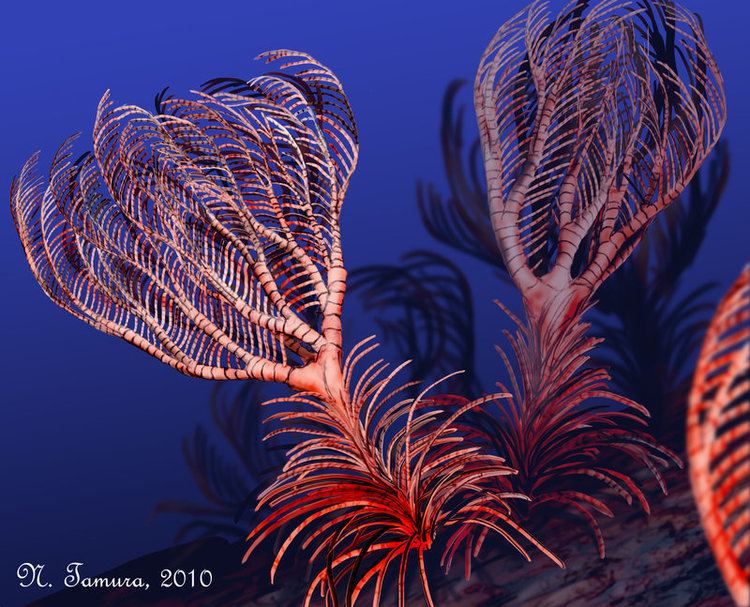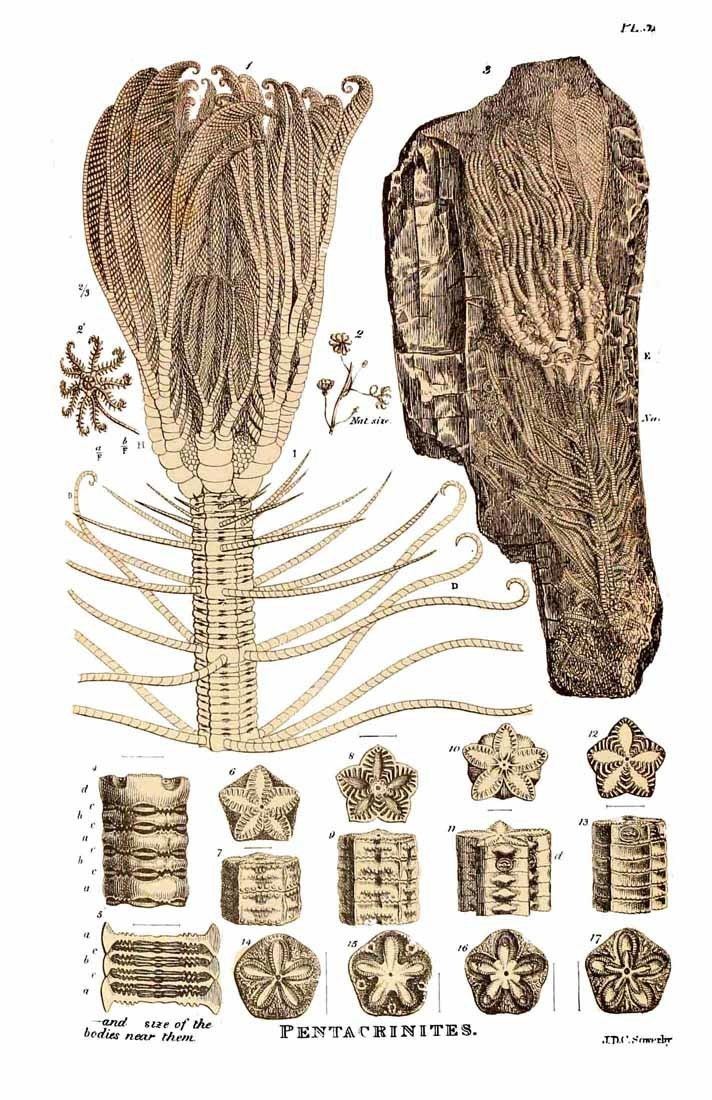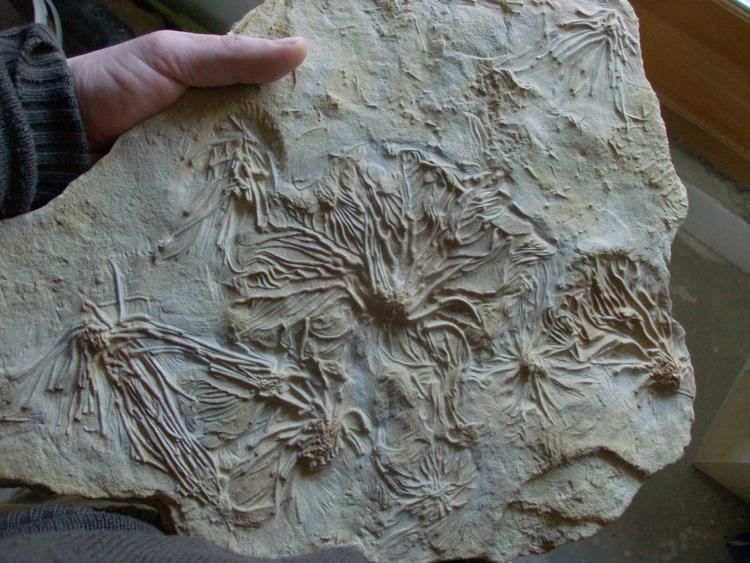Higher classification Pentacrinitidae | Subphylum Crinozoa | |
 | ||
Similar Isocrinus, Encrinus, Isocrinida, Platycrinites, Saccocoma | ||
Pentacrinites is an extinct genus of crinoids that lived from the Middle Triassic to the Eocene of Asia, Europe, North America, and New Zealand. Their stems are pentagonal to star-shaped in cross-section and are the most commonly preserved parts. Pentacrinites are commonly found in the Pentacrinites Bed of the Early Jurassic (Lower Lias) of Lyme Regis, Dorset, England. Pentacrinites can be recognized by the extensions (or cirri) all around the stem, which are long, unbranching, and of increasing length further down, the very small cup and 5 long freely branching arms.
Contents

Description

Like most echinoderms, Pentacrinites is composed of numerous calcite plates which are arranged into different body parts. Pentacrinites has 3 kinds of body part: arms, cup (calyx or theca) and stem. The stem consists of a stack of numerous 5-sided beads (or columnal plates) with a canal at their centre. The stem has flexible appendages (or cirri) that were used to attach an individual. These cirri themselves are connected to specialized columnals called nodals, leaving oval scars after breaking off. The cirri consist of diamond-shaped plates with a central canal, less flatted further from the stem. The cup-shaped calyx is very small and consists of two bands of five plates. These are the bases of the five arms. The top of the calyx is covered by numerous small polygonal plates and the mouth and anus are found on this surface.

The arms divide frequently, like tree branches, so that at the top end there may be over than 50 branches in all. The arms are formed of piles of calcite plates. The arms carry many thin feeding branches (or pinnae, like a fern frond). These pinnae have tube feet, that are covered in mucus, reach into the water and catch plankton. These arms were not very mobile. The arms plates of the arms have an insertion, that forms a grove that runs along the length of the arm and onto the calyx and transports the food particles to the mouth.
Taxonomy
Pentacrinites may have evolved from early, free living isocrinids, which occur today on the sea floor.
Reassigned species
Ecology

Pentacrinites is a floating sea lily that was attached to driftwood during its adult life. This pseudo-planktonic lifestyle enabled it to exploit food unavailable to other crinoids.
Distribution

Pentacrinites became extinct and has left no direct living descendants. Its remains have been found in many different locations, suggesting it occurred throughout the world’S oceans. Free living isocrinids however, still populate the seas, usually at over 150m deep.

